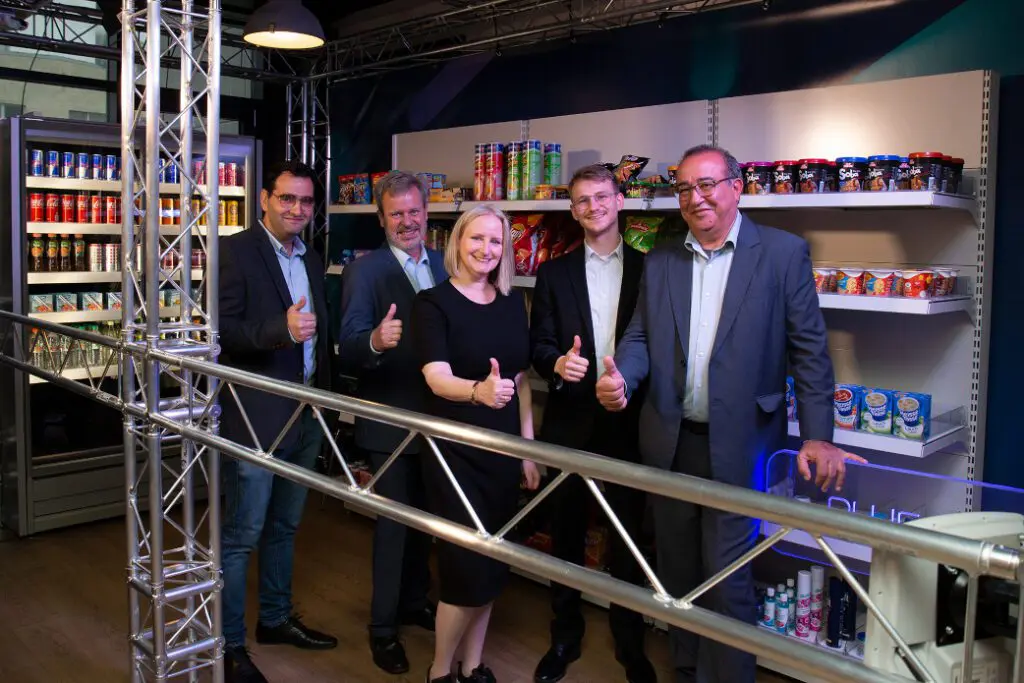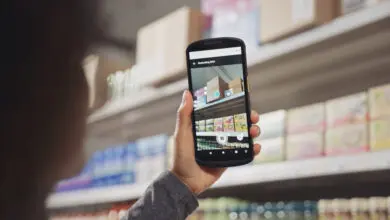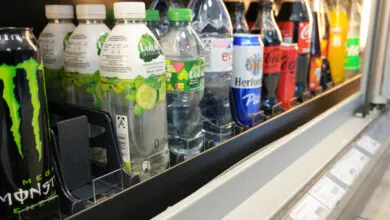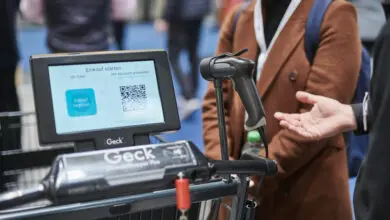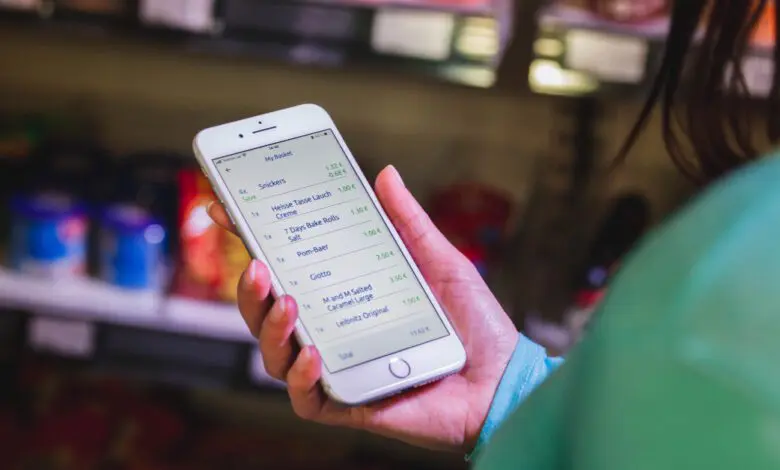
With its GK Go store, which launched last week in Schöneck, GK is showing a different approach to the hot topic scanless store technology. Together with its partners Hitachi and Shekel Ltd, the in-store experts show that real-time processing of shopping is also possible in scanless stores, bringing transparency and interaction to customers’ smartphone — while they shop.
When the primus of online retail opened its first Amazon Go store to the public on 22 January 2018, probably the greatest astonishment ever went through the retail technology scene worldwide. Technology providers had previously been developing ever new versions of tunnel scanners for the checkout, more reliable self-scanning with customers’ smartphones, and ever more sophisticated forms of theft prevention in the context of self-scanning and at self-checkouts. And now all this was suddenly to be superfluous? For many, this was hard news to digest.
Today, it seems as if stores without scanning are already something like normal. At least many large grocery retailers are testing or preparing to test scanless stores — with different technology providers. Some, including Carrefour, Aldi Süd, Tesco and Rewe, are already beyond testing with staff and friends and have opened such stores to all customers. In most of these Grab&Go shops, either Californian specialist AiFi or Israeli start-up Trigo provide the technical basis for the systems for tracking which customer takes which goods without barcode scanning.
Customers use the app to check in to the store and pay with it after shopping. They can also choose to have the amount debited and the digital receipt to their phone without having to explicitly initiate a payment process. During the shopping process itself, however, customers have no way of knowing which products have already been assigned to their shopping cart or whether they have really been deleted again if they have changed their mind and put the goods back. In most of the scanless stores realised so far, interaction between the shopper and the retailer during the shopping process is completely absent. Compared to self-scanning, shopping seems like flying blind.
The principle whereby customers only use their smartphone to check in is certainly disruptive. After all, the doors to interaction between retail companies and their customers, which self-scanning opened up, will be closed again.
Shoppers use their smartphones in stores
Consumers want to create shopping lists electronically at home and make their current wishes available on their smartphone to the family member who is shopping for the whole clan. Those who are in the store also want to learn more about the food products while they are shopping, simply want to check whether it meets their personal food requirements — whether it is also suitable for their family members.
Retailers would like to make offers to their customers adapted to their current shopping basket or to their location in the store and draw their attention to sales promotions or allow them to redeem coupons. A “service” button on the retailer’s app could trigger personal dialogue and help from staff. Last but not least, the current total of items in the shopping trolley gives customers confidence that they are not shopping beyond their means.
Interaction in scanless store
That a scanless stores doesn’t need to be necessarily also interaction-free, is GK now demonstrating with its concept GK Go. The in-store technology specialists, whose customers include industry heavyweights Edeka, Lidl, Aldi Nord and Migros, have now opened a scanless store at their headquarters in Schöneck, Germany, which enables real-time interactions between retailers and their customers.
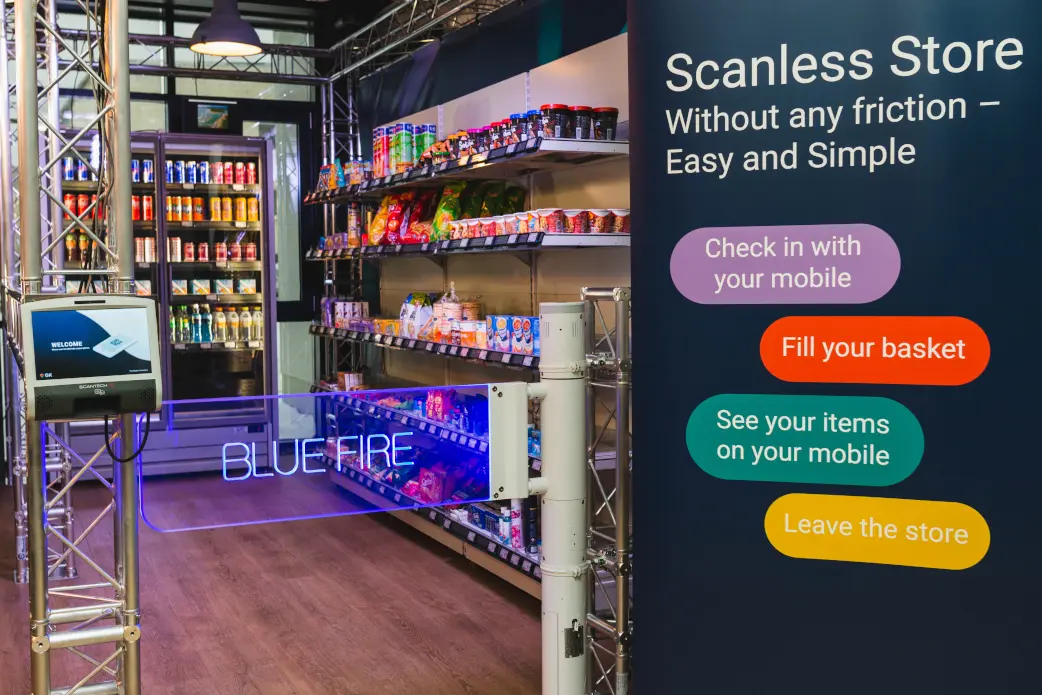
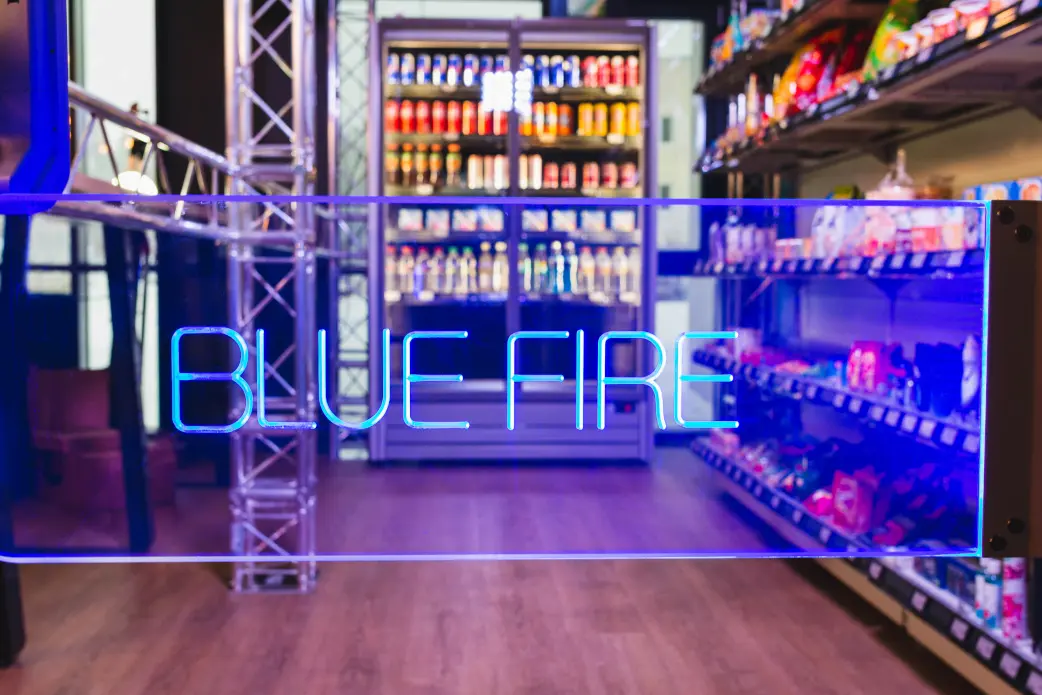
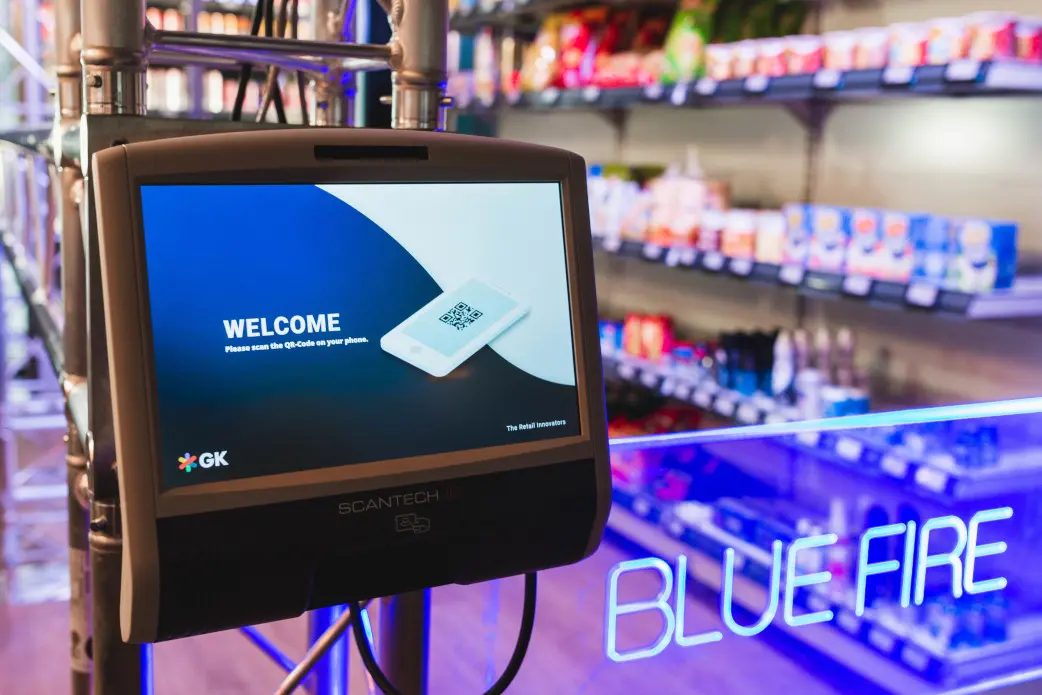
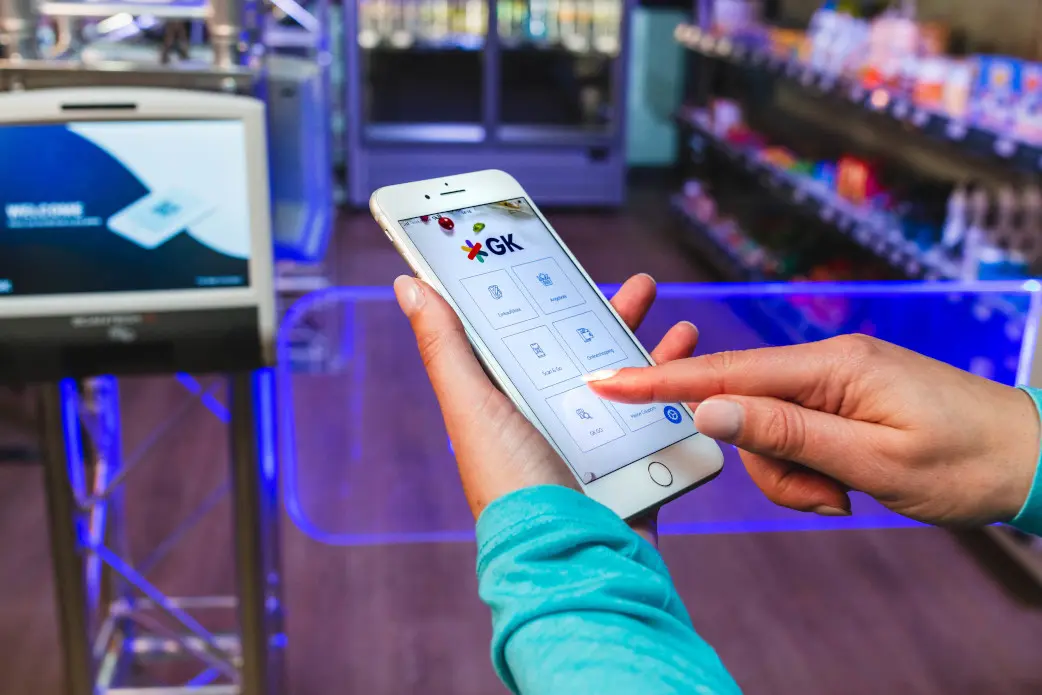
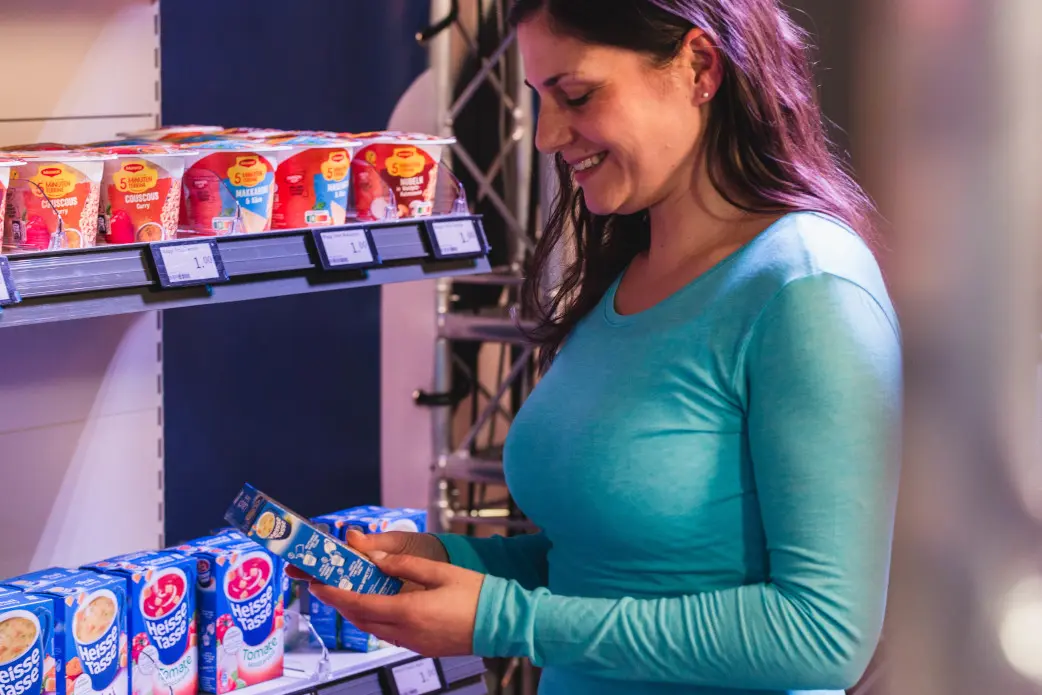
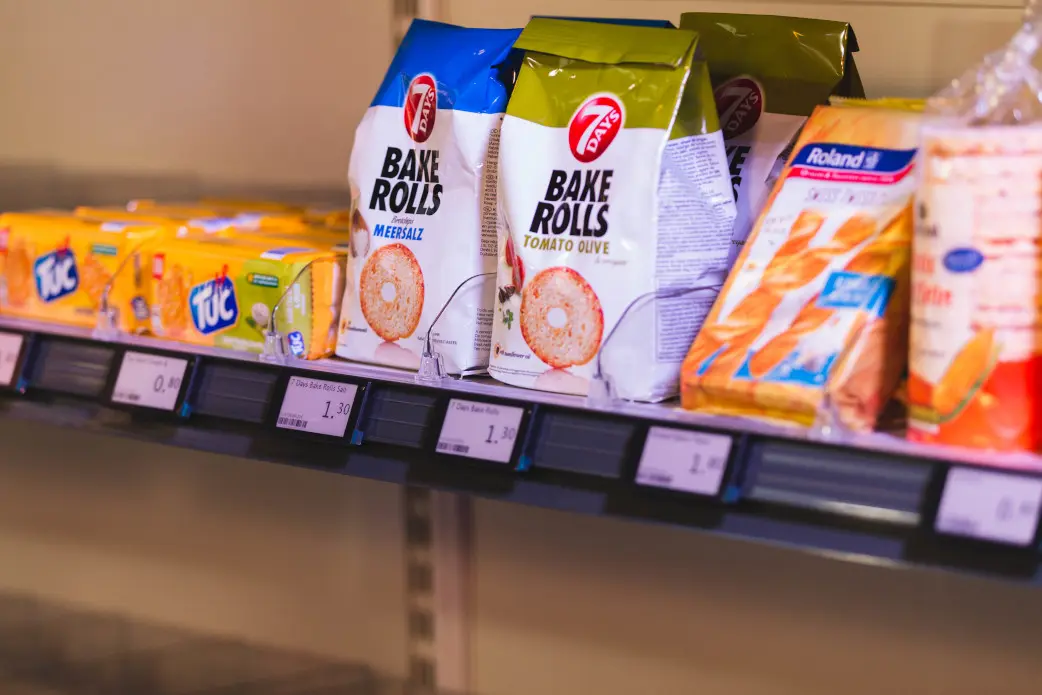
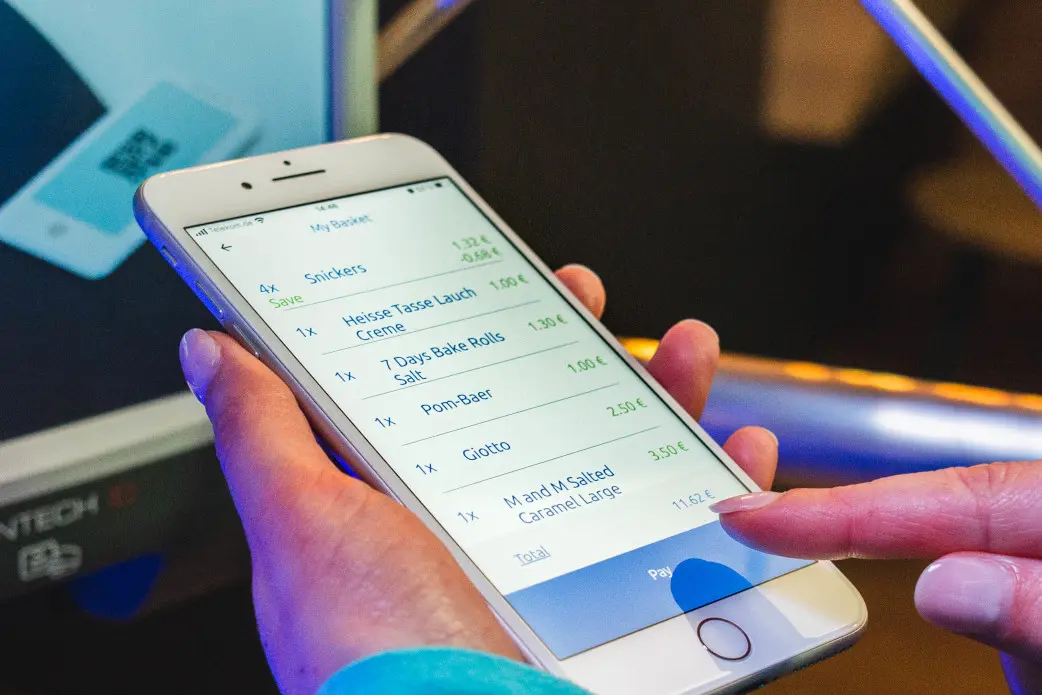
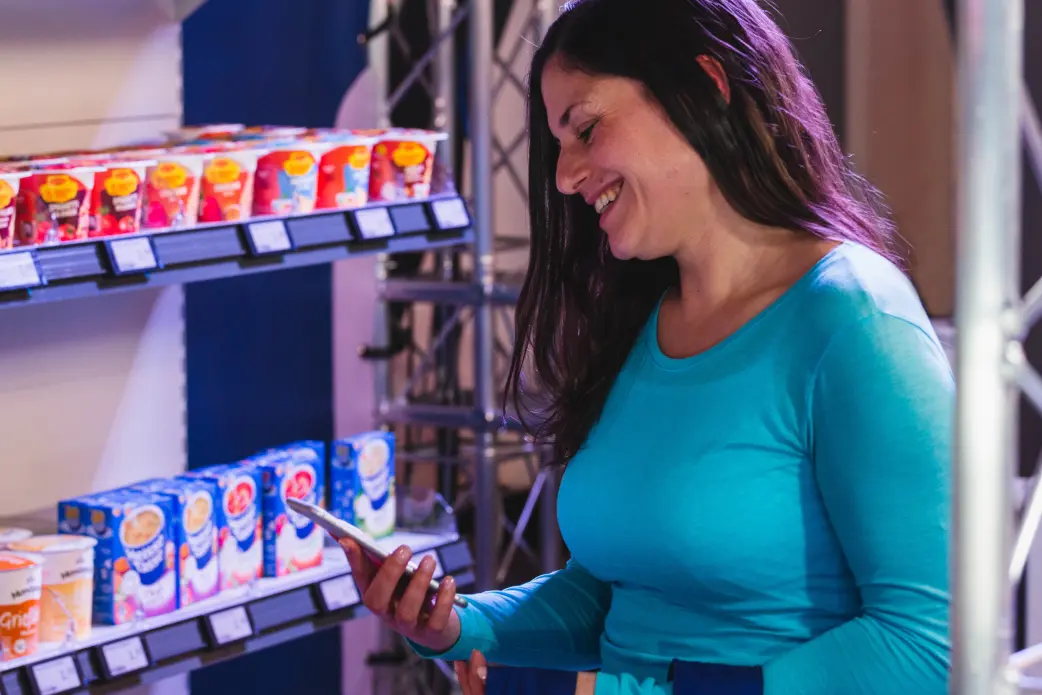
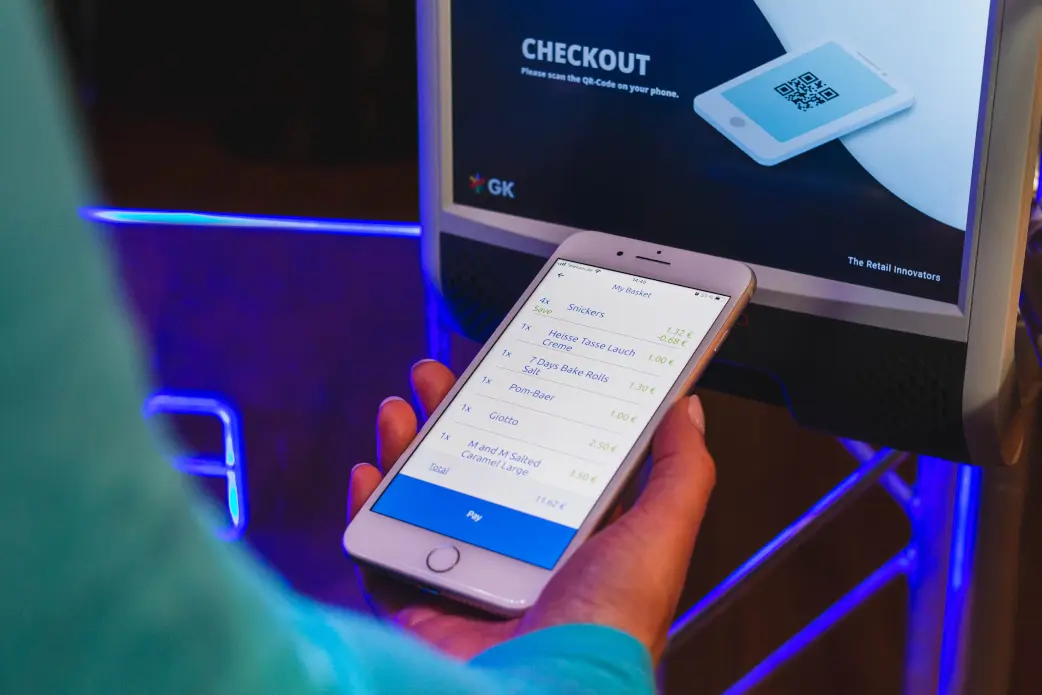
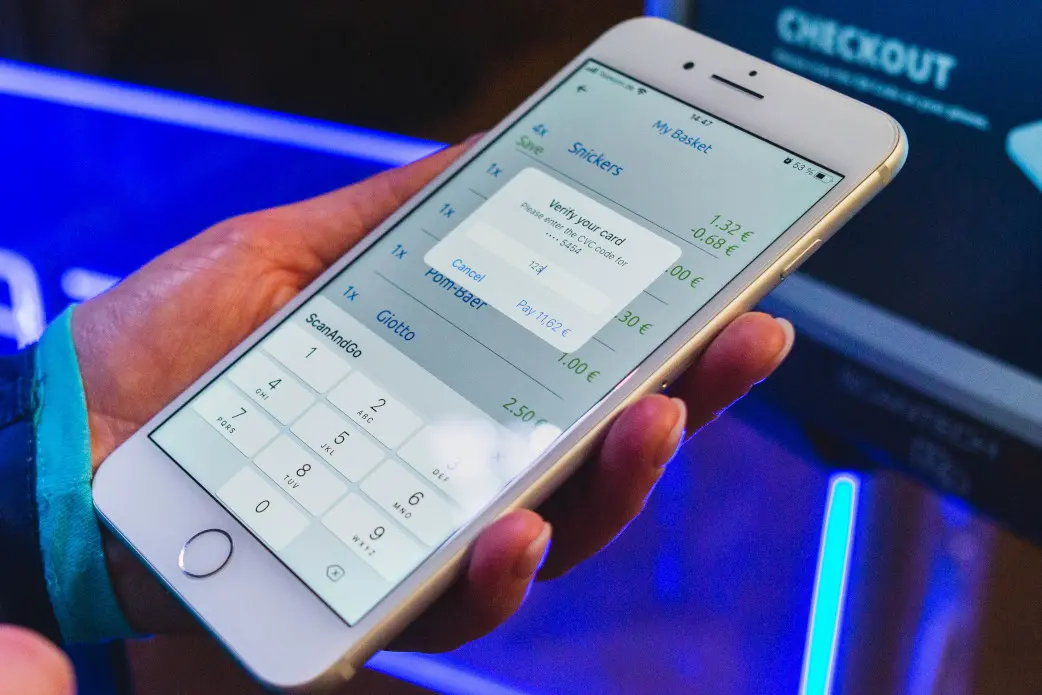
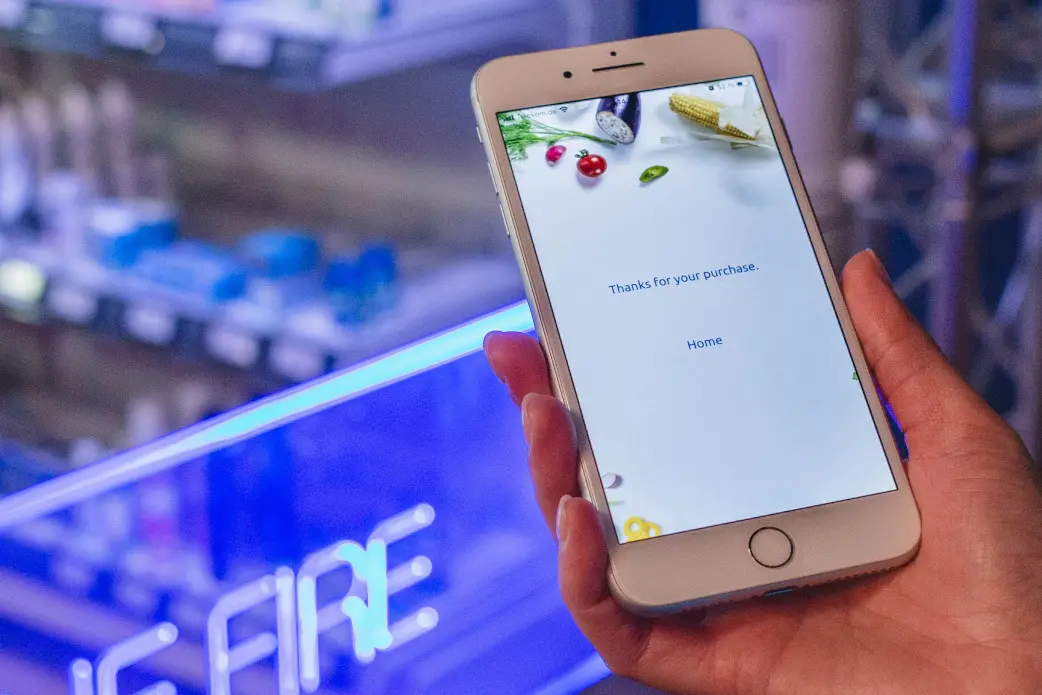
Slide Show: Follow the Retail Optimiser step-by-step through the new GK Go Store. (Photos: GK)
“Consumers want to see information that is relevant to them when they shop, regardless of channel or format,” Orit Bar-Ad, Portfolio Director at GK explains: “We are putting retailer’s interaction with consumers at the centre.” The approach is challenging because it requires seamless in-store transaction recognition in real-time. To achieve this, GK has combined the solutions of two scanless specialists for its GK Go Store. “The openness of our platform allows us to use different technologies together to provide the items and consumer events used by our new GK GO service,” explains Orit Bar-Ad.
The combination gets it done
The GK Go store uses the platform GK CLOUD4RETAIL in combination with technology from Israeli Shekel Ltd, whose Product Aware Shelves have been used to create, among other things, the Monop’ cashierless convenience store for Groupe Casino in the Clichy district of Paris. The Retail Optimiser reported. Shekel Ltd equips the shelves with intelligent weighing technology. Its software uses AI and self-learning algorithms to analyse the specific weight ‘behaviour’ and distribution of each product to uniquely identify it.
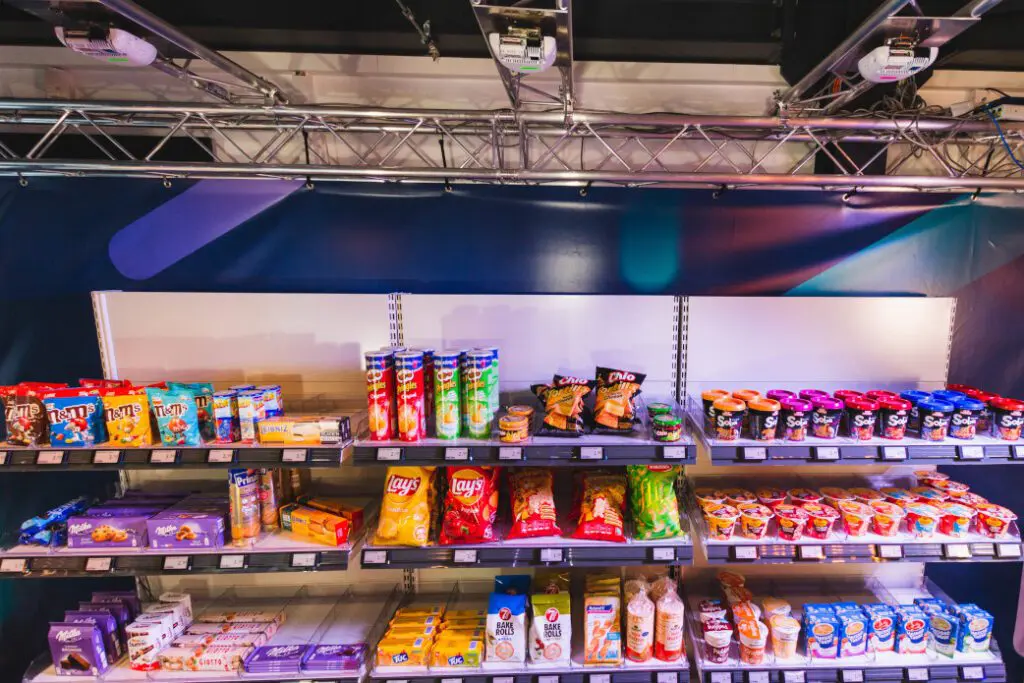
Secondly, the GK Go Store uses Hitachi’s 3D LiDAR sensors and Smart Space solution. The technology clearly allocates the items to the customer who takes them from the shelf. The Lidar method uses lasers instead of cameras to detect even moving objects and subjects. Events that take place in reality can thus be translated very precisely into digital events without creating video images with which retailers encroach on the privacy rights of their customers.
Promotions and discounts at the shelf
The combination of shelves technology and Lidar lasers is promising. In principle, however, Orit Bar-Ad emphasises, GK’s cloud-based software platform can be used together with all technologies that provide an accurate event that a certain item has been taken off the shelf, or returned to the shelf by a certain customer. “Our solution ensures that consumers can see what is their shopping cart at any point during their shopping journey, as it is updated in real time on the consumer’s smartphone, which means they can see their total so far, the items in their basket, that promotions have been applied and that their personal coupons have been redeemed and so on. This also enable additional interaction between the retailer and the shopper in the immediate context of the customer’s purchase decision at the shelf.”
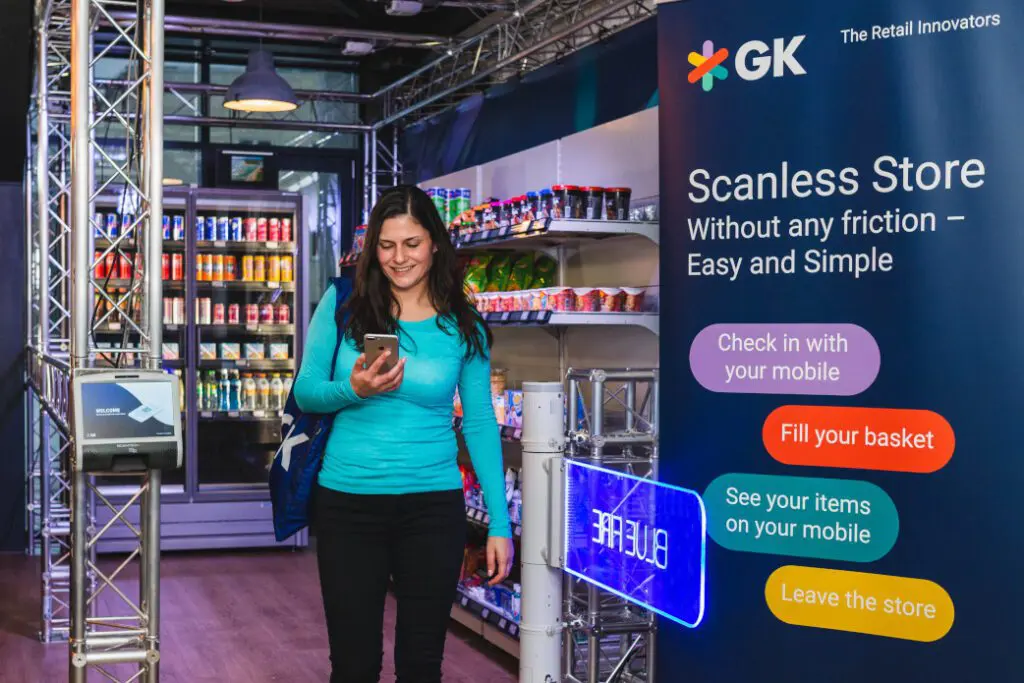
In addition to AI recognition technologies from Shekel and Hitachi, the GK GO store in Schöneck also uses a Blue Fire Gate from Pan Oston and the latest version of electronic shelf labels from Hanshow, the Nebular series, which enable remote updating of prices.
With the new approch, retailers no longer have to decide whether they want to offer their customers a pure grab-and-go solution or a shopping experience where they know what is in their basket and see their total so far at any point and can get additional information on products, promotions and perhaps individual discounts. Retailers can leave the decision to their customers: In the same store, those who are in a hurry can take their goods and go. Others who want more control and service, digital shopping lists, transparency and product information can look at their smartphone as they shop, chose whether they want to pay on their phone or at a payment kiosk, but still they do not need to scan items to support their shopping in the same store in a meaningful way.
